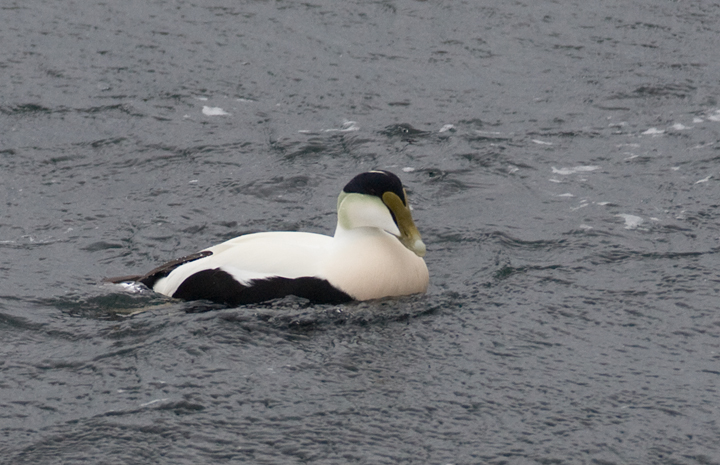Common Eider (Somateria mollissima)
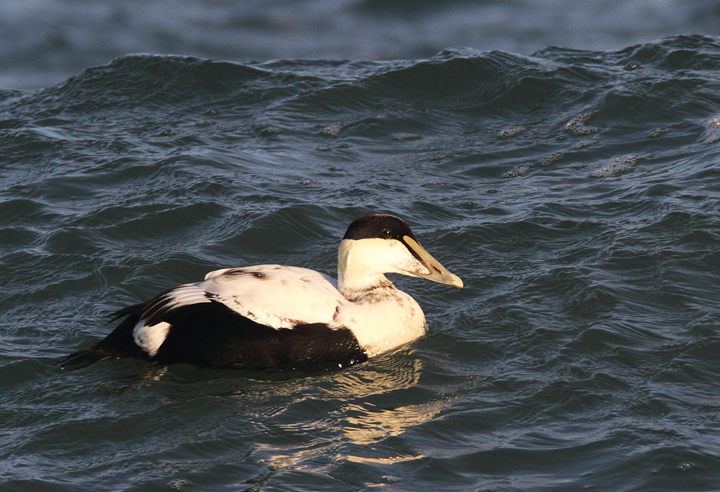
Above and below: Common Eiders were unusually cooperative at the Ocean City Inlet today, with four individuals hanging out in the surf around the north jetty (11/7/2009). These were easily my best views of the species in Maryland, which is at the southernmost part of the species' winter range. The exceptional views of adult males were particularly cool. One female was accidentally caught by local fishermen, and Jim Brighton helped rescue the bird. He removed the hook, untangled the wing from the line, and carefully placed her in the surf - after a quick study and a photo or two, of course.
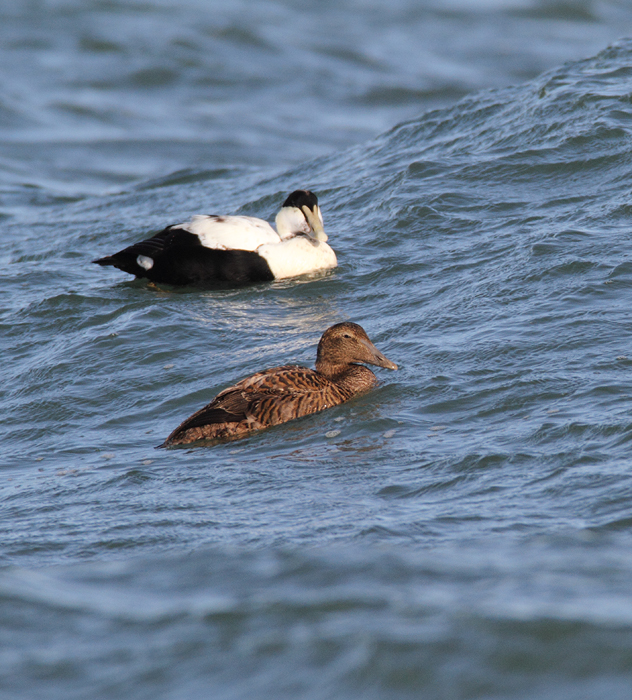
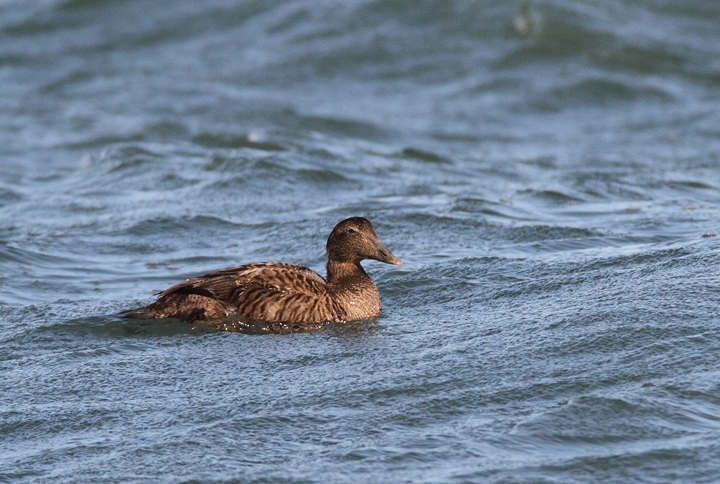
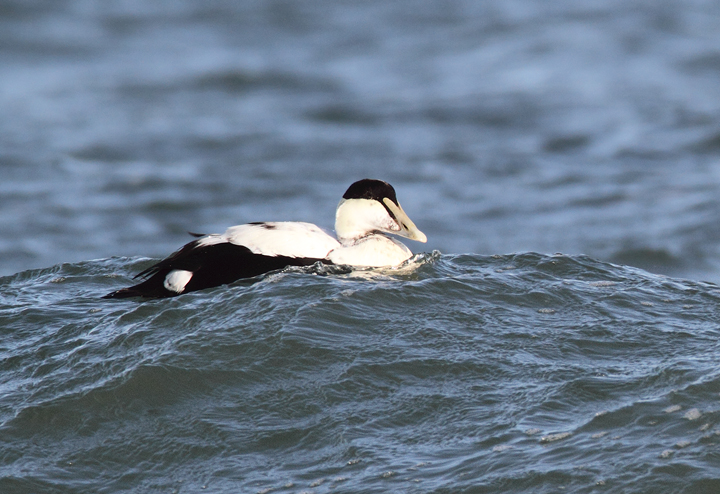
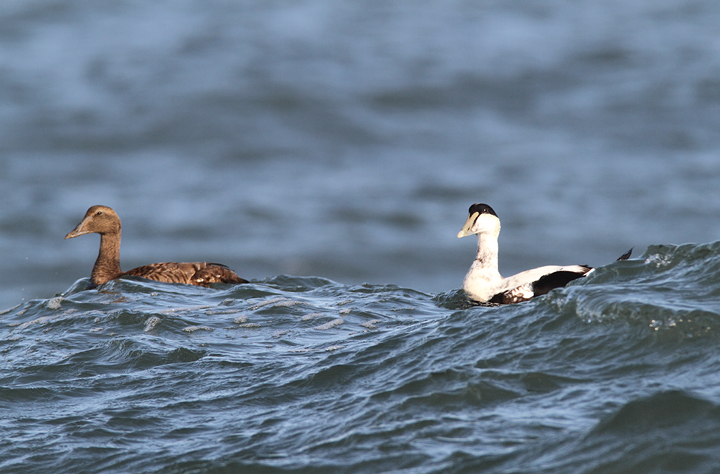
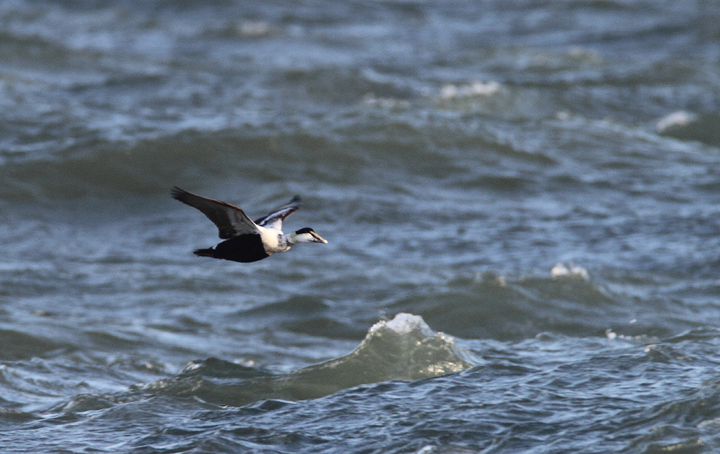
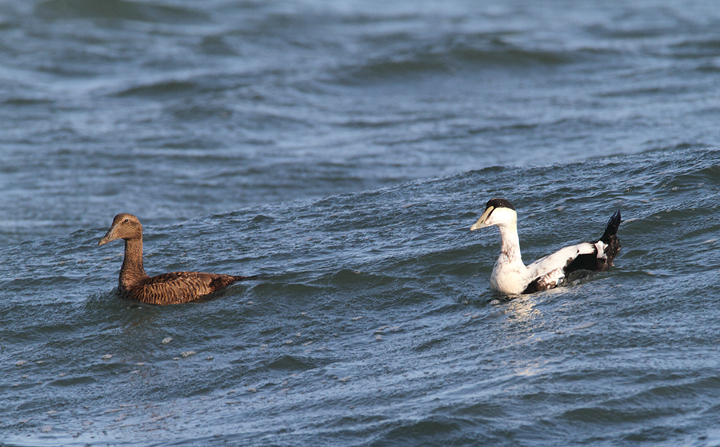
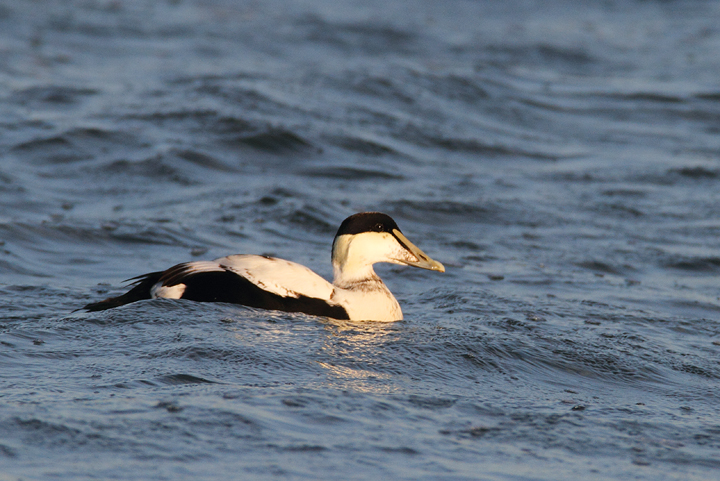
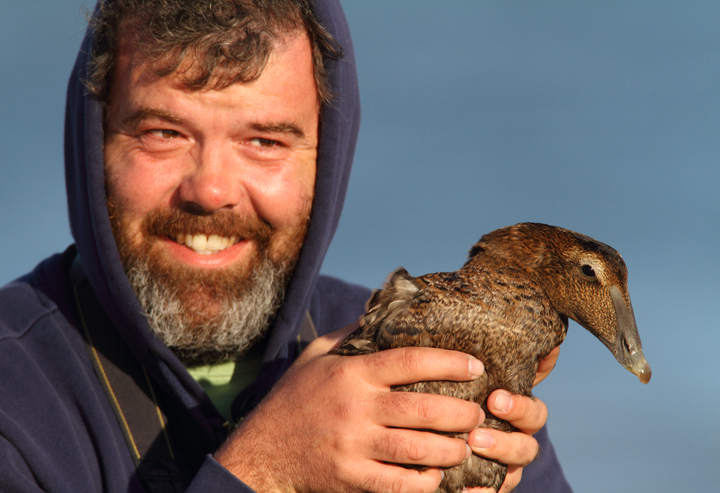
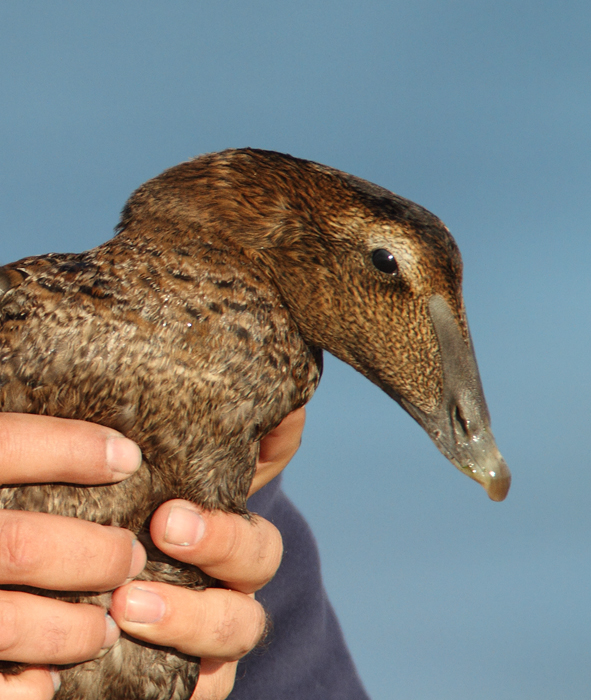
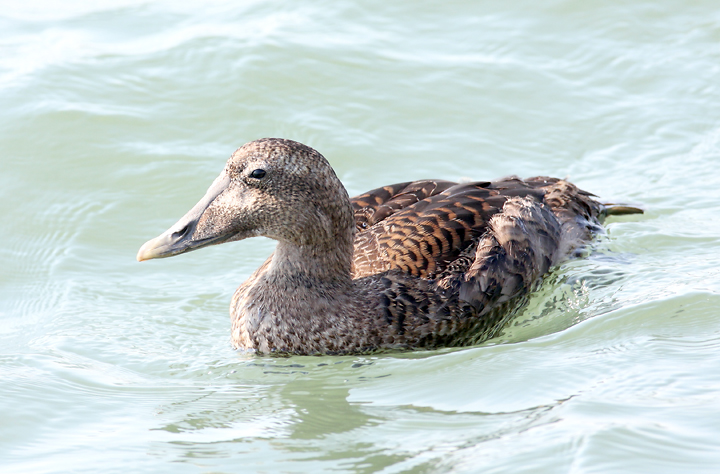
Above and below nine: This female Common Eider was exceptional in its confiding behavior, foraging along the near seawall at the Ocean City inlet (11/4/2007). Having frozen for hours in mid-winter to view distant eiders, I couldn't help but shake my head and smile as the local fisherman casually said "quack, quack" as it passed.
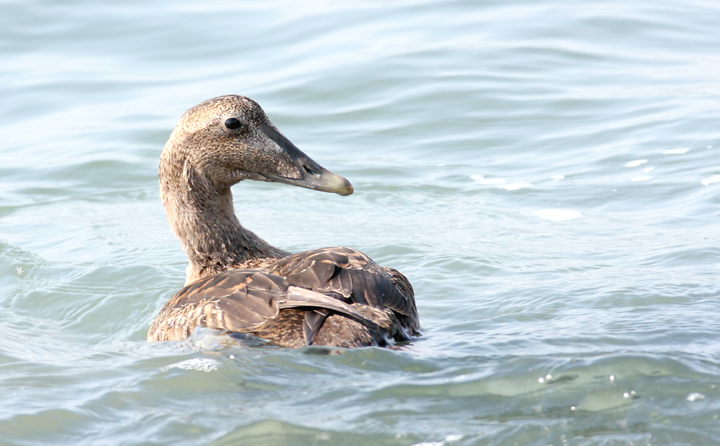
The rich reddish-brown upperparts of this bird allow identification as the Atlantic subspecies (S. m. dresseri), which is the expected subspecies in this area.
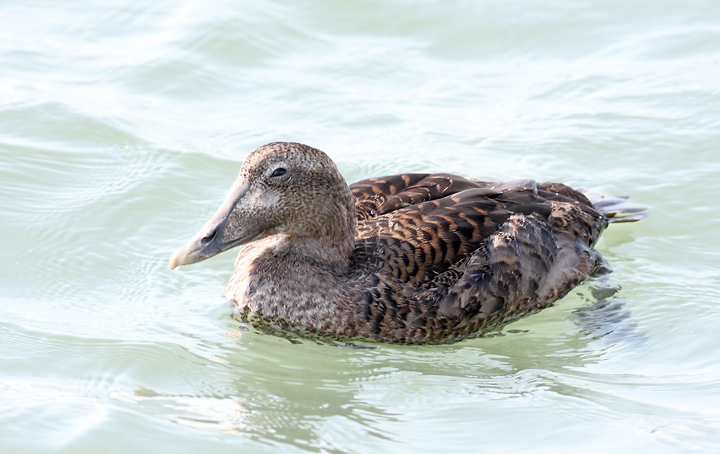
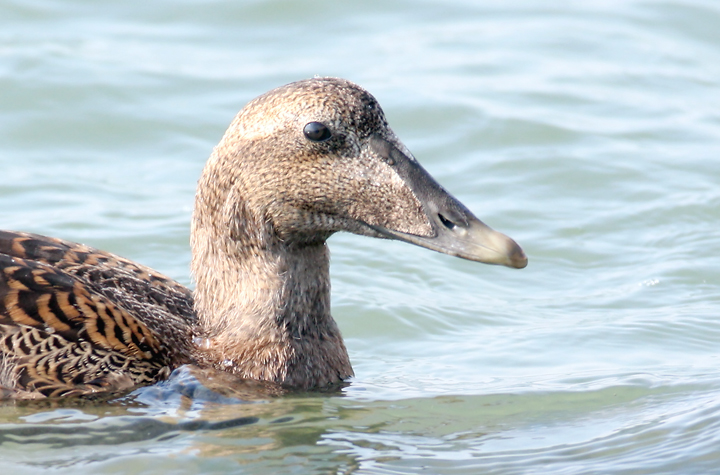
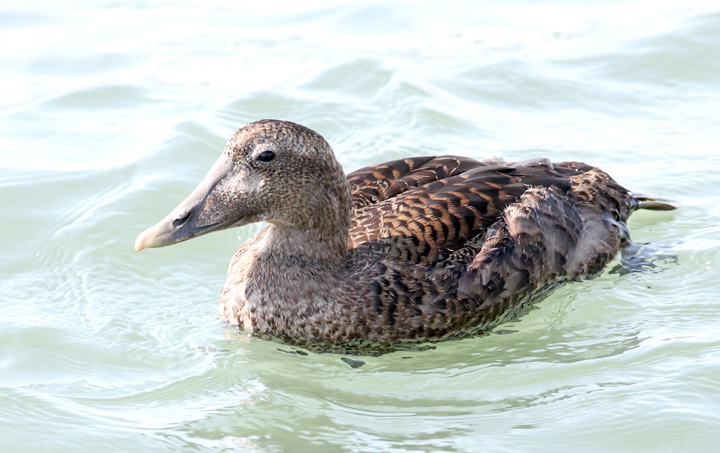
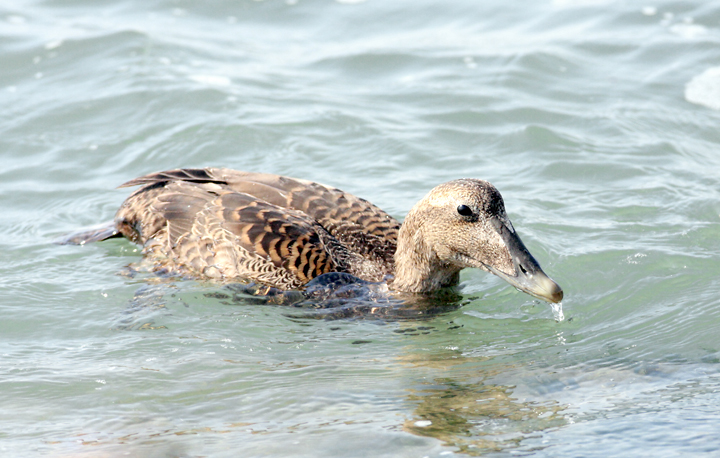
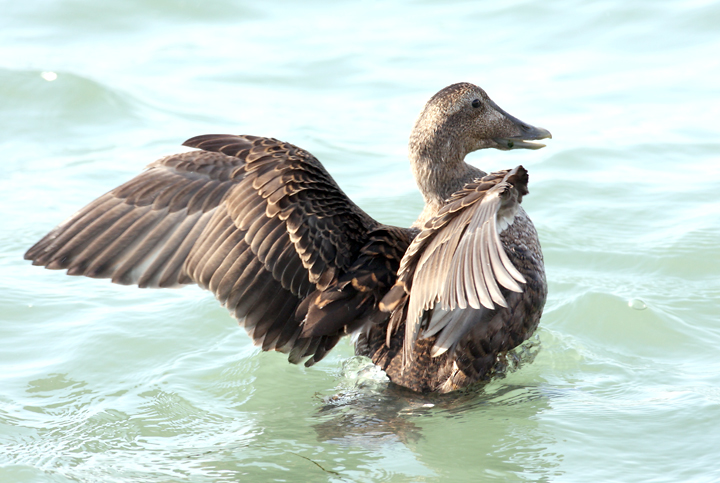
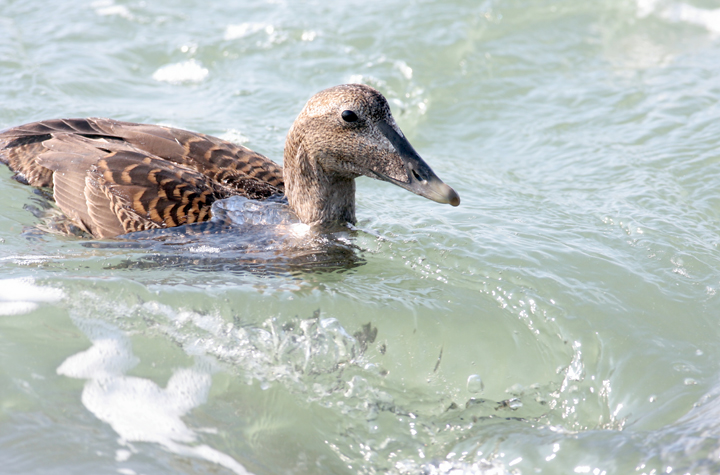
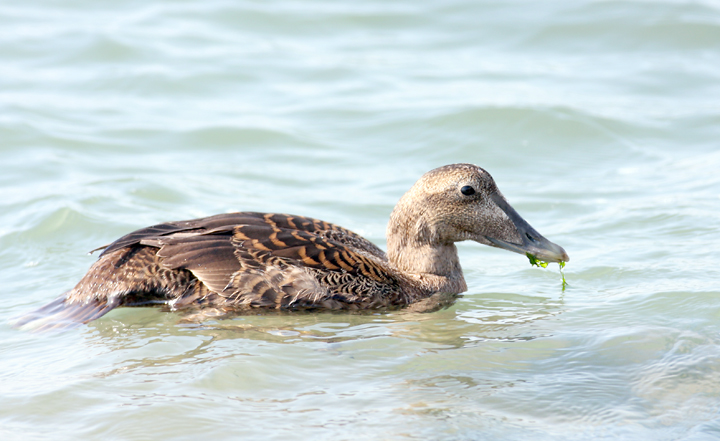
Below: A drake Common Eider (S. m. dresseri) in Cape Ann, Massachusetts (1/18/2009).
